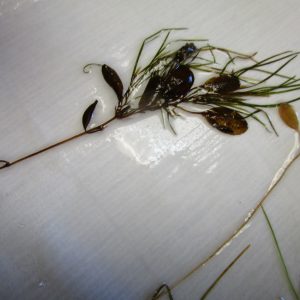Whelp, its been a while…but I guess the blog is back up and it is about time we all get in touch and see what everyone has been up to this summer.
Things here in Colorado have been pretty swell. With my internship is coming down to the final few weeks, which is crazy to think how fast it has gone. Field work is slowing down, and that fall feeling is starting to get in the air.
View from the top of Mt. Sherman after a day of sampling
Some hi-lights over the past few weeks have included:
A week spent in Fairplay, CO (the town that the inspiration for the TV show South Park was formed from) sampling for a tiny plant in the mustard family called Eutrema penlandii. This tiny guy is an ice age relict, more commonly found at high latitudes, and closely related to Eutrema japonica (wasabi). All in all it was a good week, with a lot of folks crammed in a small cabin, a few ptarmigans, a less than wet wetland (due to the pretty serious drought Colorado has been experiencing), and a fox that seemed to want to be a part of the field work too!
Photo of E.penlandii with a penny for scale.

Gentiana algida (arctic gentian)at the field site

A big 'ol bugger (thumb for scale)

Some folks taking a summit hike after work
Our friend the fox
35% fox
Some additional highlights the last few weeks have been a backpacking trip in the maroon bells, a week sampling for North Park Phacelia (P.formosula) and establishing a demographic monitoring protocol in order to get more information on the species life history, and a really cool t-shirt find at a thrift store.
North Park Phacelia (P.formosula)
Me sporting quite possibly what might be the coolest t-shirt ever made
Lots of Castilleja in the Maroon Bells-Snowmass Wilderness
More Castilleja
Now for some low lights of the last few weeks:
#1 THE DROUGHT:
Currently, Colorado is experiencing an extreme drought, with some of the driest conditions recorded since 2002. This in addition to Colorado’s naturally dry climate is very apparent. The drought has significantly effected some of our monitoring plans this year, causing us to skip our species diversity assessment (Modified Whittaker) plots up in the high country, since nothing was blooming. We have also had a rough trip out to Montrose sampling Eriogonum pellinopholim, with most of our plants looking barely alive, and perhaps dormant (unable to put out vegetative or reproductive growth given the severe environmental conditions).
#2 BAD MEXICAN FOOD
If you’r ever in Rangeley, CO…don’t do it.
Can’t wait to hear more about what everyone else has been up to this summer and where their paths may take them next! My next stop once work is finished up here for CLM is Moab to work with the USGS studying the effects of drought and climate change in dry land ecosystems. If anyone is passing through Utah on their way to their next adventure come say hi!
Cheers,
Sam







 Upon my late arrival across the Arkansas border, after driving a short 2-day drive from New Hampshire, I was swiftly confronted by high winds, heavy rain, tumultuous thunder, and threat of a tornado, (which I shortly learned was nothing out of the ordinary for the Natural State – lovely, isn’t it?). I remarked, “Thanks for the hearty greeting, Arkansas – glad to make your acquaintance, too”.
Upon my late arrival across the Arkansas border, after driving a short 2-day drive from New Hampshire, I was swiftly confronted by high winds, heavy rain, tumultuous thunder, and threat of a tornado, (which I shortly learned was nothing out of the ordinary for the Natural State – lovely, isn’t it?). I remarked, “Thanks for the hearty greeting, Arkansas – glad to make your acquaintance, too”.































